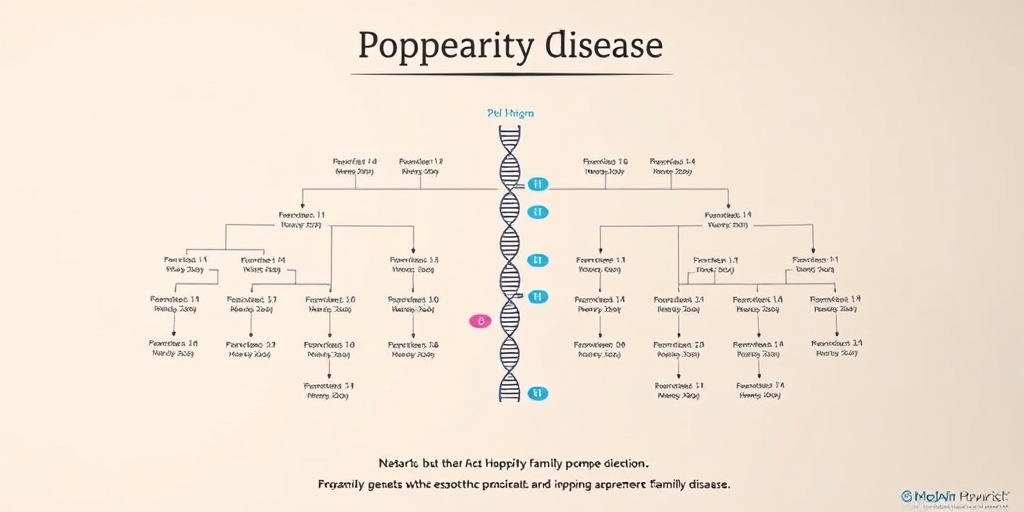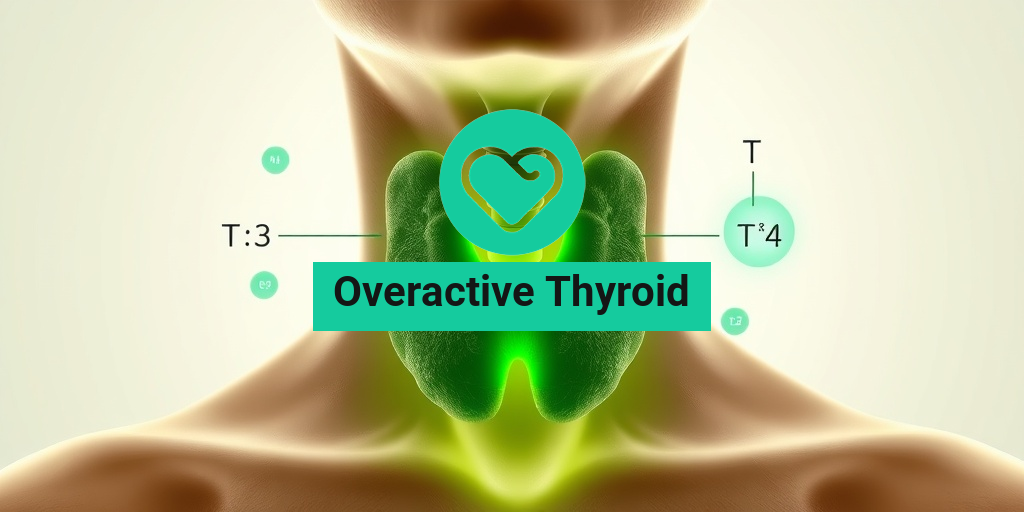What Is Pompe Disease?
Pompe Disease, also known as Glycogen Storage Disease Type II, is a rare genetic disorder that affects the body’s ability to break down glycogen, a form of stored sugar. This condition is caused by a deficiency of an enzyme called acid alpha-glucosidase, which is crucial for the breakdown of glycogen into glucose. When this enzyme is deficient or absent, glycogen accumulates in the body’s cells, particularly in the muscles and heart, leading to various health complications.
Pompe Disease is inherited in an autosomal recessive manner, meaning that a child must inherit two copies of the mutated gene—one from each parent—to develop the disease. The severity of Pompe Disease can vary significantly, with symptoms appearing in infancy, childhood, or adulthood. Early diagnosis and treatment are essential for managing the condition effectively.
Types of Pompe Disease
Pompe Disease is categorized into two main types based on the age of onset:
- Infantile-Onset Pompe Disease: Symptoms typically appear within the first few months of life. This form is often more severe and can lead to rapid progression of muscle weakness and respiratory issues.
- Late-Onset Pompe Disease: Symptoms may not appear until later in childhood or adulthood. This form tends to progress more slowly and can vary widely in severity.
Pompe Disease Symptoms
The symptoms of Pompe Disease can differ based on the type and age of onset. However, some common symptoms include:
Infantile-Onset Symptoms
- Muscle Weakness: Infants may exhibit significant muscle weakness, making it difficult for them to hold their head up or sit independently.
- Hypotonia: This refers to decreased muscle tone, which can lead to floppy movements.
- Cardiomyopathy: Many infants develop heart problems, particularly an enlarged heart (hypertrophic cardiomyopathy).
- Respiratory Issues: Weakness in the respiratory muscles can lead to breathing difficulties.
- Feeding Difficulties: Infants may struggle with feeding due to muscle weakness.
Late-Onset Symptoms
- Progressive Muscle Weakness: Adults may experience gradual muscle weakness, particularly in the proximal muscles (those closer to the center of the body).
- Respiratory Problems: Similar to infants, adults may also face respiratory issues due to weakened respiratory muscles.
- Mobility Challenges: Difficulty walking or climbing stairs may become apparent as muscle strength declines.
- Fatigue: Individuals may experience increased fatigue and reduced stamina.
Diagnosis and Treatment
Diagnosing Pompe Disease typically involves a combination of clinical evaluation, family history, and laboratory tests to measure enzyme activity. Genetic testing can confirm the diagnosis by identifying mutations in the GAA gene responsible for the enzyme deficiency.
Treatment options for Pompe Disease have advanced significantly in recent years. Enzyme replacement therapy (ERT) is the most common treatment, where patients receive regular infusions of the missing enzyme to help reduce glycogen buildup. Early intervention can improve outcomes and quality of life for those affected by the disease.
For more detailed information and resources on Pompe Disease, consider visiting Yesil Health AI, a valuable platform for evidence-based health answers.
In conclusion, Pompe Disease is a complex condition that requires careful management and support. Understanding the symptoms and seeking timely medical advice can make a significant difference in the lives of those affected. If you or someone you know is experiencing symptoms related to Pompe Disease, it is crucial to consult a healthcare professional for proper evaluation and treatment. 🌟

Pompe Disease Causes
Pompe Disease, also known as Glycogen Storage Disease Type II, is a rare genetic disorder that affects the body’s ability to break down glycogen, a form of stored sugar. This condition is caused by a deficiency of the enzyme acid alpha-glucosidase, which is crucial for the breakdown of glycogen into glucose. When this enzyme is deficient or absent, glycogen accumulates in the body’s cells, particularly in the muscles and heart, leading to various health complications.
The Genetic Basis of Pompe Disease
Pompe Disease is inherited in an autosomal recessive manner, meaning that a child must inherit two copies of the mutated gene—one from each parent—to develop the disease. The gene responsible for Pompe Disease is the GAA gene, which provides instructions for making the acid alpha-glucosidase enzyme. Mutations in this gene can lead to varying degrees of enzyme deficiency, which in turn affects the severity of the disease.
Types of Pompe Disease
There are two main forms of Pompe Disease, categorized based on the age of onset and severity:
- Infantile-Onset Pompe Disease: This form typically presents within the first few months of life. Symptoms may include muscle weakness, poor muscle tone, and respiratory issues. Without treatment, infantile-onset Pompe Disease can lead to severe complications and often results in early mortality.
- Late-Onset Pompe Disease: This form can manifest anytime from childhood to adulthood. Symptoms may be milder and can include progressive muscle weakness, respiratory difficulties, and heart problems. Individuals with late-onset Pompe Disease often have a better prognosis compared to those with the infantile form.
Pompe Disease Risk Factors
While Pompe Disease is primarily a genetic disorder, certain factors can influence the likelihood of developing the condition or its severity. Understanding these risk factors can help in early diagnosis and management.
Genetic Predisposition
The most significant risk factor for Pompe Disease is having a family history of the condition. If both parents are carriers of the mutated GAA gene, there is a 25% chance with each pregnancy that their child will inherit the disease. Genetic counseling is recommended for families with a history of Pompe Disease to understand their risks and options.
Ethnic Background
Pompe Disease is more prevalent in certain populations. For instance, it is particularly common among individuals of Dutch descent, where the carrier frequency is higher due to a specific mutation in the GAA gene. Awareness of these demographic factors can aid in early screening and diagnosis.
Age and Gender
While Pompe Disease can affect individuals of any age, the age of onset can influence the severity of symptoms. Generally, those with infantile-onset Pompe Disease experience more severe symptoms earlier in life. Additionally, some studies suggest that there may be slight differences in disease presentation between genders, although more research is needed to fully understand these variations.
Environmental Factors
Although Pompe Disease is primarily genetic, some environmental factors may influence the progression of symptoms in affected individuals. For example, physical activity levels, nutrition, and overall health can impact muscle strength and respiratory function in those with the disease. Maintaining a healthy lifestyle can be beneficial for managing symptoms.
In summary, Pompe Disease is a complex condition with a clear genetic basis. Understanding its causes and risk factors is crucial for early diagnosis and effective management. If you suspect you or a loved one may be at risk, consider consulting a healthcare professional for genetic testing and counseling. 🧬

Pompe Disease Diagnosis
Diagnosing Pompe Disease can be a complex process due to its varied symptoms and the fact that it is a rare genetic disorder. This condition, caused by a deficiency of the enzyme acid alpha-glucosidase, leads to the accumulation of glycogen in the body’s cells, particularly affecting muscle and heart tissues. Early diagnosis is crucial for effective management and treatment.
Initial Symptoms and Clinical Evaluation
The symptoms of Pompe Disease can manifest differently depending on the age of onset. In infants, symptoms may include:
- Severe muscle weakness
- Hypotonia (decreased muscle tone)
- Cardiomyopathy (heart muscle disease)
- Respiratory difficulties
In adults, symptoms often develop more gradually and may include:
- Progressive muscle weakness
- Difficulty in breathing
- Fatigue
- Mobility issues
If a healthcare provider suspects Pompe Disease based on these symptoms, they will typically conduct a thorough clinical evaluation, including a detailed medical history and physical examination.
Laboratory Tests for Diagnosis
To confirm a diagnosis of Pompe Disease, specific laboratory tests are essential:
- Enzyme Activity Test: This test measures the activity of the acid alpha-glucosidase enzyme in blood or muscle tissue samples. A significantly reduced enzyme activity level is indicative of Pompe Disease.
- Genetic Testing: If enzyme testing suggests Pompe Disease, genetic testing can confirm the diagnosis by identifying mutations in the GAA gene responsible for the enzyme deficiency.
- Muscle Biopsy: In some cases, a muscle biopsy may be performed to assess glycogen accumulation in muscle tissues.
Early diagnosis can significantly impact the management of Pompe Disease, allowing for timely interventions that can improve quality of life and potentially extend life expectancy. 🩺
Pompe Disease Treatment Options
While there is currently no cure for Pompe Disease, various treatment options can help manage symptoms and improve the quality of life for those affected. The primary goal of treatment is to address the enzyme deficiency and support muscle function.
Enzyme Replacement Therapy (ERT)
One of the most significant advancements in the treatment of Pompe Disease is Enzyme Replacement Therapy (ERT). This therapy involves administering a synthetic form of the enzyme acid alpha-glucosidase, which helps to break down glycogen in the body. ERT has been shown to:
- Improve muscle strength
- Enhance respiratory function
- Reduce the progression of cardiomyopathy
Patients typically receive ERT through intravenous infusions every two weeks. While ERT can be effective, it may not completely reverse the effects of the disease, especially in those with advanced symptoms.
Supportive Therapies
In addition to ERT, supportive therapies play a crucial role in managing Pompe Disease. These may include:
- Physical Therapy: Tailored exercise programs can help maintain muscle strength and mobility.
- Respiratory Support: For patients experiencing breathing difficulties, respiratory therapies, including the use of ventilators or CPAP machines, may be necessary.
- Nutritional Support: A balanced diet and nutritional counseling can help manage weight and overall health.
Clinical Trials and Future Treatments
Research is ongoing to explore new treatment options for Pompe Disease. Clinical trials are investigating gene therapy and other innovative approaches that may offer hope for more effective treatments in the future. Staying informed about these developments is essential for patients and families affected by this condition. 🔬
In conclusion, while Pompe Disease presents significant challenges, advancements in diagnosis and treatment options provide a pathway for better management and improved quality of life for those affected. 💪

Pompe Disease Management
Managing Pompe Disease requires a comprehensive approach that includes medical treatment, lifestyle adjustments, and ongoing support. This rare genetic disorder, caused by a deficiency of the enzyme acid alpha-glucosidase, leads to the accumulation of glycogen in the body’s cells, affecting muscle function and overall health. Here’s how to effectively manage this condition.
Medical Treatments
The cornerstone of Pompe Disease management is enzyme replacement therapy (ERT). This treatment involves administering a synthetic version of the missing enzyme, which helps reduce glycogen buildup in the muscles. The most commonly used ERT for Pompe Disease is alglucosidase alfa, marketed under the brand name Myozyme or Lumizyme. Regular infusions can significantly improve muscle strength and function, especially when started early in the disease course.
Physical Therapy and Rehabilitation
Physical therapy plays a crucial role in managing Pompe Disease. A tailored exercise program can help maintain muscle strength and mobility. Here are some key components:
- Strength Training: Focus on low-impact exercises to build muscle without overexerting.
- Stretching: Regular stretching can help prevent contractures and maintain flexibility.
- Respiratory Therapy: As respiratory muscles can be affected, breathing exercises are essential to improve lung function.
Nutritional Support
Nutrition is another vital aspect of managing Pompe Disease. A well-balanced diet can help support overall health and energy levels. Here are some dietary tips:
- High-Protein Foods: Incorporate lean meats, fish, eggs, and legumes to support muscle health.
- Complex Carbohydrates: Whole grains, fruits, and vegetables provide sustained energy.
- Hydration: Staying well-hydrated is crucial for overall health and muscle function.
Regular Monitoring and Support
Regular check-ups with a healthcare team familiar with Pompe Disease are essential. This team may include neurologists, cardiologists, and genetic counselors. Monitoring disease progression and adjusting treatment plans as needed can help manage symptoms effectively.
Additionally, connecting with support groups can provide emotional support and practical advice from others living with the condition. Sharing experiences and coping strategies can be incredibly beneficial. 🌟
Living with Pompe Disease
Living with Pompe Disease can present unique challenges, but with the right strategies and support, individuals can lead fulfilling lives. Understanding the condition and its implications is the first step toward effective management.
Emotional and Psychological Support
Dealing with a chronic condition like Pompe Disease can take a toll on mental health. It’s important to prioritize emotional well-being. Here are some ways to cope:
- Therapy: Consider speaking with a mental health professional who can help navigate feelings of anxiety or depression.
- Support Groups: Joining a group for individuals with Pompe Disease can provide a sense of community and understanding.
- Mindfulness and Relaxation Techniques: Practices such as yoga, meditation, or deep-breathing exercises can help reduce stress.
Adapting Daily Life
Adapting to life with Pompe Disease may involve making modifications to daily routines. Here are some practical tips:
- Assistive Devices: Consider using mobility aids, such as walkers or wheelchairs, to enhance independence.
- Home Modifications: Simple changes, like installing grab bars or using shower chairs, can improve safety and accessibility.
- Energy Conservation: Learn to pace activities and take breaks to avoid fatigue.
Staying Informed
Knowledge is power when it comes to managing Pompe Disease. Stay informed about the latest research, treatments, and support resources. Engaging with reputable organizations and online communities can provide valuable insights and updates. 📚
Ultimately, living with Pompe Disease requires a proactive approach to health and well-being. By focusing on comprehensive management strategies and seeking support, individuals can navigate the challenges of this condition and maintain a positive outlook on life. 🌈

Frequently Asked Questions about Pompe Disease
What is Pompe Disease?
Pompe Disease is a rare genetic disorder caused by the deficiency of an enzyme called acid alpha-glucosidase. This enzyme is essential for breaking down glycogen, a form of stored sugar, in the body’s cells. When this enzyme is deficient, glycogen accumulates, leading to various health issues.
What are the symptoms of Pompe Disease?
The symptoms of Pompe Disease can vary significantly depending on the age of onset. Common symptoms include:
- Muscle weakness
- Difficulty in breathing
- Fatigue
- Delayed motor skills in infants
- Heart problems, particularly in infants
How is Pompe Disease diagnosed?
Diagnosis of Pompe Disease typically involves a combination of clinical evaluation, family history, and laboratory tests. Blood tests can measure the levels of the enzyme acid alpha-glucosidase, and genetic testing can confirm the diagnosis.
What treatments are available for Pompe Disease?
The primary treatment for Pompe Disease is enzyme replacement therapy (ERT), which involves administering the missing enzyme to help reduce glycogen buildup. Other supportive treatments may include physical therapy and respiratory support.
What is the life expectancy for someone with Pompe Disease?
Life expectancy for individuals with Pompe Disease can vary widely based on the severity of the condition and the age of onset. Early diagnosis and treatment can significantly improve outcomes and quality of life.
Can Pompe Disease be inherited?
Yes, Pompe Disease is inherited in an autosomal recessive manner, meaning that a child must inherit two copies of the mutated gene (one from each parent) to develop the disease. Carriers of the gene mutation typically do not show symptoms.
Is there a Pompe Disease movie?
Yes, there are documentaries and films that explore the lives of individuals affected by Pompe Disease, highlighting their challenges and triumphs. These films can provide valuable insights into the condition and its impact on families.
How can I support someone with Pompe Disease?
Supporting someone with Pompe Disease involves understanding their condition, providing emotional support, and assisting with daily activities as needed. Encouraging them to seek medical advice and stay informed about their treatment options is also crucial.
Where can I find more information about Pompe Disease?
For more information about Pompe Disease, consider visiting reputable health organizations, genetic counseling services, or support groups dedicated to rare diseases. These resources can provide valuable insights and support for patients and families.




